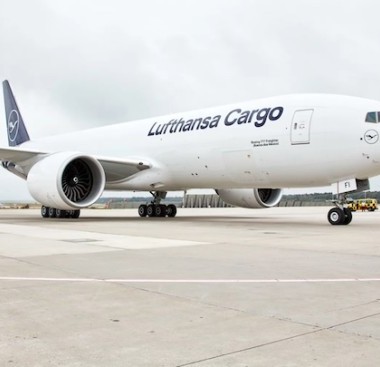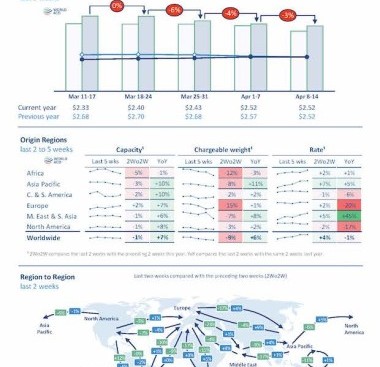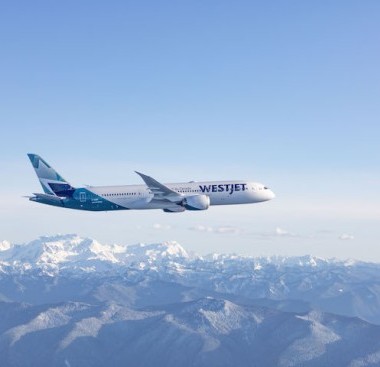Port of New York and New Jersey well-positioned to get shipped goods quickly to St. Louis region business and consumers
May 30, 2023The East Coast’s largest container gateway – the Port of New York and New Jersey, accommodates more than 30,000 rail lifts annually for goods moving back and forth between the Port and the bi-state St. Louis region, which has direct, daily rail connectivity to the East Coast port via Norfolk Southern and CSX. While it may be just a small percentage of the total 700,000 rail lifts the Port handled last year, the Deputy Port Director for the Port Authority of New York and New Jersey said he sees potential for the volume of goods moving between the St. Louis region and the East Coast to grow. Deputy Port Director Mike Bozza said his port is ready to take on that additional volume. The connectivity between his port and the St. Louis region was highlighted during a special Freight Summit hosted by the St. Louis Regional Freightway on May 24 as part of FreightWeekSTL 2023.
Mary Lamie moderated the Freight Summit keynote session that featured Bozza and called attention to the similarities between Bi-State Development and the Port of New York and New Jersey of both having multiple enterprises. Lamie is Executive Vice President of Multi Modal Enterprises for Bi-State Development, which operates St. Louis Regional Freightway as one of its enterprises.
“Both of our agencies have an interstate compact that was created by Congress to coordinate and lead regional or national matters like transit,” said Lamie, who in her role at Bi-State Development also oversees the operations at St. Louis Downtown Airport and the Gateway Arch trams and Riverboats at the Gateway Arch in addition to leading the St. Louis Regional Freightway.
Even if the physical port it is just one component of the Port Authority of New York and New Jersey’s overall operations, it is a significant player in the global supply chain. Because of the size of the local market, all the major ocean carriers call on the Port of New York and New Jersey, and for 75% of the vessel calls coming to the Port, NY/NJ is the first stop.

“Why is that important for St. Louis?” asked Bozza. “We've also invested over $600 million in rail facilities so that every one of our marine terminals has on or near dock rail, and we have capacity for over one and a half million lifts of rail cargo alone. It's our view and our vision that rail cargo and intermodal cargo to places like St. Louis is what's going to help us grow and continue to grow and be a major port gateway, not just on the East Coast, but in the country into the future.”
Bozza said with approximately 700,000 rail lifts in 2022, the port has plenty of capacity to accommodate additional lifts. “The more exports that we can get, the more we can drive and attract that intermodal cargo and continue to be a major partner,” said Bozza.
He said shippers in the St. Louis region can take advantage of the fact that his port is a first port of call for many ocean carriers and is accommodating increasingly larger ships capable of carrying 16,000 TEUs (20 foot equivalent units). Because the ships are so large, they must spend more time in port. They'll spend three, maybe four days in port, Bozza said.
“So, your box coming to St. Louis with a three to four day transit time on rail, it can be here before the ship even leaves New York and goes on to Norfolk, Savannah or other destinations,” said Bozza. “If speed is a concern, we're well positioned with the infrastructure, with the time, and with the scheduled service to get goods there quickly.”
Bozza said they also have certain vessels that do double calls. Starting in New York, the ships will travel down the East Coast and then will return to New York. So, from the export standpoint, exports from the St. Louis region can be added at that last port of call before the ocean vessels head back to Europe, Asia or other global destinations.
Bozza pointed to pandemic related changes in the supply chain that have been a positive for the Port of New York and New Jersey. He said the share of goods coming from China was previously well over 34 or 35%, but now it's under 30% with market share going to places like Vietnam, India, Bangladesh and other countries that, from a shipping perspective, it makes more sense to come through the Suez Canal than to go to the West Coast. He called attention to the growing market share in India, and in particular, the products moving between his port and the bi-state St. Louis region.
“India is your number one trading partner, and it's a lot of steel, plastics parts and components,” said Bozza. “And that's a lot of what your exports are as well. So, it seems to me you're pulling in the raw materials and you're shipping out transportation equipment, chemicals, so on and so forth.”
Looking at other factors impacting the supply chain and ultimately, the potential for future growth in the volume of freight moving through the Port of New York and New Jersey, Bozza said he looks at the supply chain as a pipe.
“Where it's sourced and where the shipping lines are, the pipe is very wide. And as you go to the port, the truck, the rail, the warehouse, out to the last mile, that pipe gets thinner and thinner and thinner. And at the end, it's kind of like the pipe underneath your sink in your house. When that gets crimped, everything else is impacted.”
He said from his perspective, the Port of New York and New Jersey did well comparatively in terms of maintaining fluidity during the COVID-19 pandemic, but he acknowledged there are changes needed throughout the supply chain to manage the next surge in cargo. He said the Port of New York and New Jersey’s Council on Port Performance, which includes many stakeholders similar to those working closely with the St. Louis Regional Freightway, was instrumental in guiding the pandemic response. The Council is now focusing on, he said, that far end of the supply chain, trying to identify the warehouse and distribution owners and working with the railroads to try to open up new avenues to keep freight moving.
“We want to widen the pipe at that far end to get back to the analogy I was using before, so that it's all the same width and things will flow much more freely,” said Bozza.
“It's clear you and your team with the Port of New York and New Jersey are playing a significant role in the movement of freight in and out of the United States,” said Lamie. “We appreciate everything you are doing from an investment perspective because that is obviously going to be helping the Midwest and regions like the St. Louis area. We also are spending a significant amount of our time and effort so we can support everything that you're doing with your facility,” she said, referring to the $3.7 billion in projects on the St. Louis Regional Freightway’s 2024 Priority Projects List that was released during the same Freight Summit event that featured Bozza. The Priority Projects List is a valuable tool used to advocate for support and funding for critical infrastructure improvements that strengthen the St. Louis region’s position as a world-class freight hub.
Similar Stories
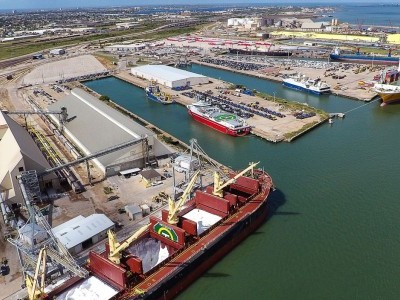
Galveston Wharves board approves $29 million construction contract for cargo area
View Article
Canaveral Port Authority opens applications for Junior Ambassador Program
View Article
Port of Brownsville awards $1,000 scholarships to high school graduates
View Article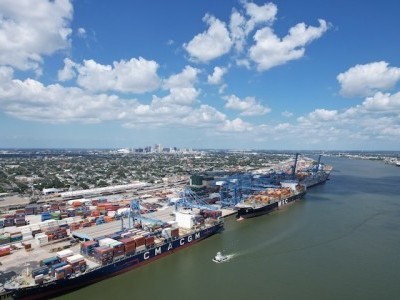
Port of New Orleans announces $7.1 million in federal funding for sustainability infrastructure
View Article
CBP officers continue recovering stolen vehicles at Charleston and Savannah seaports
View ArticleAmerica’s ports will reduce air pollution with $150 million in FHWA grants
Today, the American Association of Port Authorities (AAPA), joined by several port leaders at a White House event, celebrated almost $150 million in grants from the Federal Highway Administration's (FHWA)…
View ArticleGet the most up-to-date trending news!
SubscribeIndustry updates and weekly newsletter direct to your inbox!


